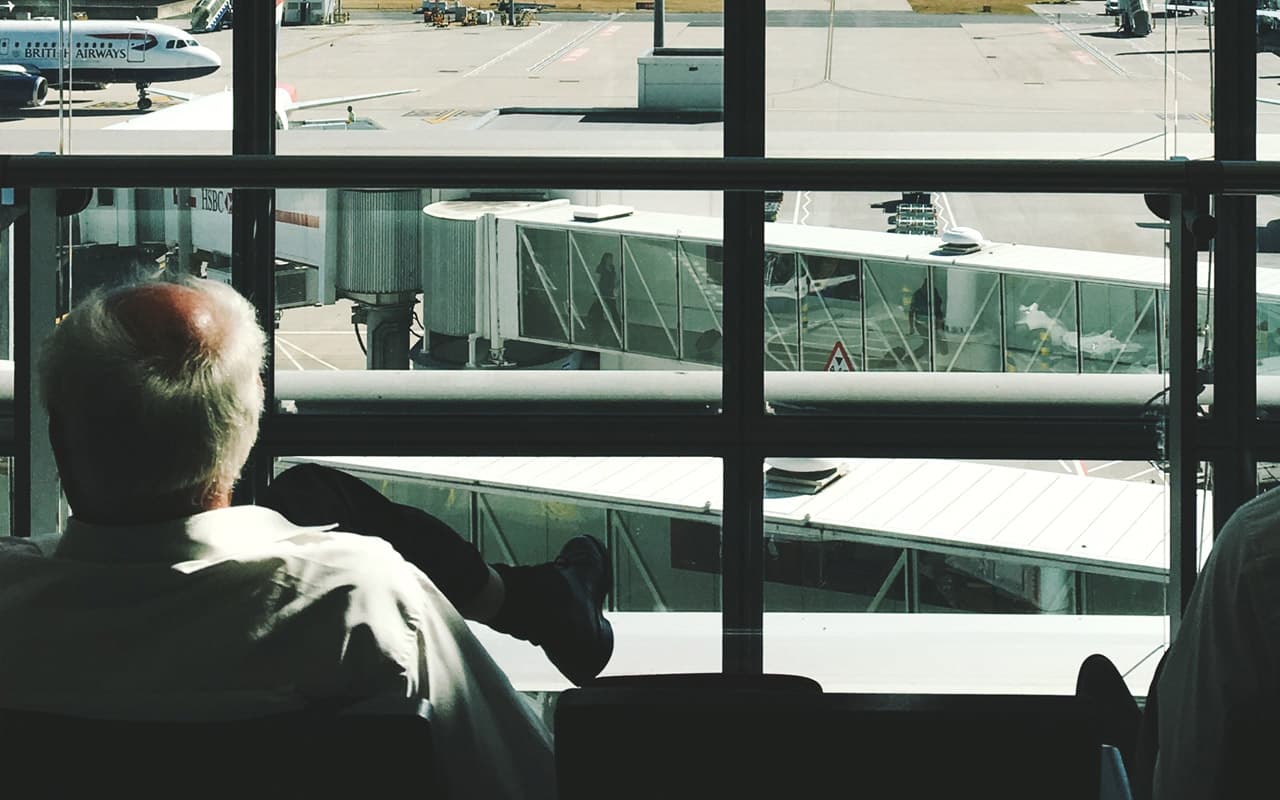No question—traveling with bowel incontinence is inconvenient. Still, with the right preparation and packing strategies in place, you can cut down on a lot of unnecessary stress.
In today’s guide, we won’t shy away from the topics you need to know about. And yes, that means poop-urge plans of action and protective products!
But first, can we ask if you’ve ever been in a situation like this before?
You fidget, hunch over, and, before long...you’re squeezing "it" in with all your might.
Traveling with bowel incontinence can be challenging, but with the right preparation and packing strategies, you can significantly reduce stress. This guide will cover everything you need to know, from managing sudden urges to essential protective products.
Feeling that sudden urge?
Have you ever been in a situation where you suddenly feel an intense urge to go, and you’re nowhere near a bathroom? These moments can feel like a cruel surprise, especially when you’re away from home, driving, or traveling abroad.
The good news is you don’t have to "just put up with it" and worry about accidents every time you leave the house. There are proactive strategies you can use to avoid embarrassment and travel with greater peace of mind. We'll cover them in three phases:
Phase 1: Prepare
Phase 2: Pack
Phase 3: Proceed!
DOWNLOAD CHECKLIST
Phase 1: Prepare
Bowel incontinence exercises: strengthening your sphincter muscles
While exercises aren't a guaranteed fix for sudden urges or bowel incontinence, consistent practice can significantly strengthen the key muscles in your pelvic area.
Kegel exercises, often used for urinary incontinence, can also help reduce the chance of bowel leakage. As MedLinePlus explains, a Kegel exercise is "like pretending you have to urinate and then holding it. You relax and tighten the muscles that control urine flow." For more details, read our blog: Combating Incontinence with Kegels.
Healthline advises that results from Kegels won't appear overnight; commit to at least 6–8 weeks of practice. The more days you can exercise before your trip, the better, as building muscle strength in the areas that control bowel movements can make your travels much more comfortable.
Beyond Kegels, here are four other exercises and therapies approved by the Mayo Clinic that may increase anal sphincter control:
Biofeedback: Exercises designed to strengthen pelvic floor muscles for more reliable contraction during sudden urges.
Bulking agents: Injections of nonabsorbable bulking agents that can help prevent leaks by thickening the anal walls.
Sacral nerve stimulation (SNS): A device implanted near the spinal cord that sends electrical signals to better regulate nerves involved in bowel function.
Bowel training: With guidance from a doctor or healthcare practitioner, you may be able to train your body to pass stool at a consistent time each day, making travel planning more manageable.
Seating on planes: the best places to sit on public transport
What's the number one travel priority for those who experience sudden bowel movements? It's not extra legroom or avoiding crying babies (though those are nice!).
Instead, the top priority is easy access to a toilet. A seat where you can see if the restroom is free or occupied is ideal. Plus, you won't have far to walk if you need to go pronto!
On aircraft, toilets are typically at the front and rear. You might consider informing airline staff of your health needs; they may be able to grant allowances to use the toilets when they would otherwise be out of action (e.g., during boarding).
For public transport like trains and buses, toilet layouts vary. On buses with facilities, they're usually at the rear. Some trains have one toilet per carriage, while others are more spread out.
Phase 2: Pack
Choose the right clothing for comfort and discretion
When packing clothes for a trip, consider two crucial factors for bowel incontinence:
Many people opt for sportswear like T-shirts and jogging pants for long journeys. Comfort is paramount when traveling, so think loose-fitting shirts and elastic waistbands. A hoodie or cardigan that can be easily taken on and off can also be helpful.
For lower-half clothing, colors like black, brown, or navy blue will conceal leaks better than lighter shades such as white or pink.
Review your supplies: essential items for emergencies
Getting caught off guard is never pleasant, but it's more manageable if you have these items on hand:
Disposable wipes
Tissue paper
Water
Spare clothing
Bin bags
Anti-bacterial gel
Deodorant/fragrance
But what if it’s already too late? If you experience sudden bowel movements without warning, or if stool leaks without you knowing, a protective incontinence product can alleviate much of the stress.
Here are five travel incontinence products Carewell recommends if your bowels often give you trouble:
Phase 3: Proceed! Traveling with bowel incontinence
Food & medication: a sensible plan for your travel day
Adhering to any diet or medication plan you've been advised to follow is even more crucial when you're away from home.
It's tempting to let routines slip when traveling or having fun. However, if this leaves your bowels vulnerable to pain and discomfort, it's not worth it.
It may go without saying, but continue to take any prescription medicines for constipation or diarrhea at the correct times and dosage.
Also, ensure you can cook or eat the foods that keep you well. This might involve researching nearby grocery stores where you're staying or looking up restaurant menus online.
A series of light meals throughout the day is less likely to cause digestive symptoms like bloating and gas than large buffet feasts. If spicy or acidic foods irritate your gut, keep those off the menu while traveling.
You can also check out the MealPrepPro app (#6 on their list) for customizable recipe ideas tailored to your or your loved one's dietary needs.
Use a toilet-finding tool: apps to get you to a public restroom quicker
Ever feel on edge during a cross-country car journey, unsure where the next available "pit stop" is?
Technology, for all its quirks, makes finding toilets much simpler, especially if you have bowel incontinence or are prone to sudden urges you can't hold for long.
Google Maps is well-known for directions, but did you know it might also show you the nearest public restroom?
There are also specific toilet-locator apps like Flush, SitOrSquat, and Bathroom Scout. Reviews for these apps can be mixed, so try them all to see which works best for you.
Toilet access abroad: how to ask for a toilet in Spanish, French & more
Asking a local where the toilet is doesn't have to be a headache. You don't need to master the foreign language of the country you're visiting; just learning a few key phrases will serve you well.
Here's how to ask "where is the toilet?" in several widely spoken languages:
Spanish: ¿Dónde están los aseos?
French: Où sont les toilettes?
Italian: Dov’è la toilette?
German: Wo ist die Toilette?
Japanese: 便所はどこですか (benjo wa doko desu ka?)
Hopefully, these strategies make you feel more prepared to travel comfortably while managing bowel incontinence and any potential emergencies. Need some extra help figuring out which items to purchase ahead of your trip You're welcome to call us at (800) 696-CARE, or get in touch by writing us at support@carewell.com.



